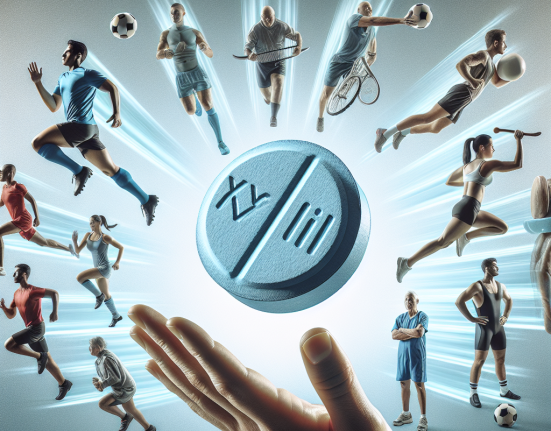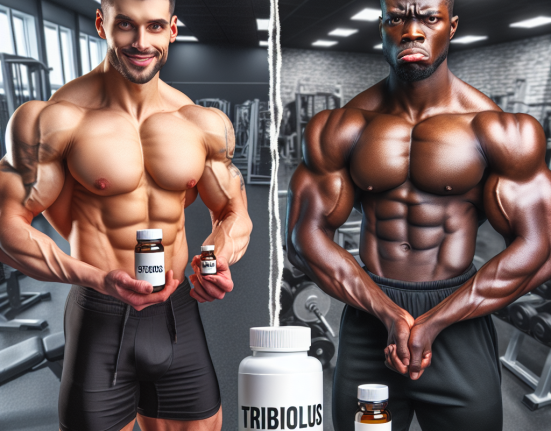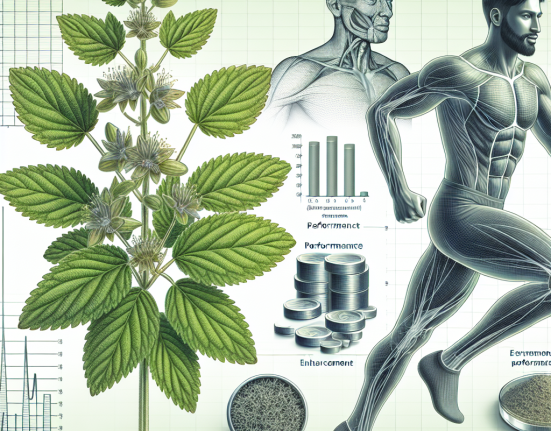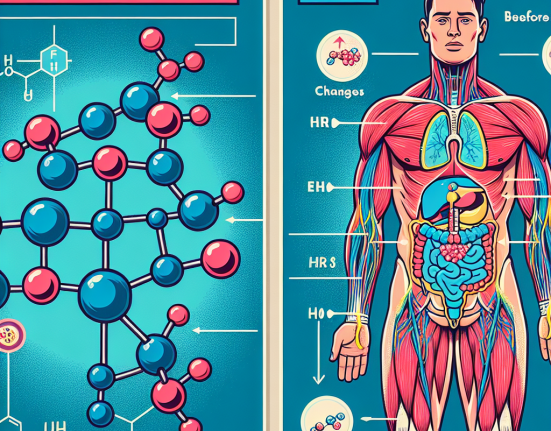-
Table of Contents
- Letrozole and Testosterone: A Vital Combination for Athletes
- The Role of Letrozole in Sports
- The Benefits of Testosterone for Athletes
- The Synergistic Effect of Letrozole and Testosterone
- Pharmacokinetics and Pharmacodynamics of Letrozole and Testosterone
- Real-World Examples
- Expert Opinion
- Conclusion
- References
Letrozole and Testosterone: A Vital Combination for Athletes
Athletes are constantly seeking ways to improve their performance and gain a competitive edge. While training, nutrition, and genetics play a significant role, the use of performance-enhancing drugs has become a common practice in the world of sports. Among these drugs, letrozole and testosterone have gained popularity for their ability to enhance athletic performance. In this article, we will explore the pharmacokinetics and pharmacodynamics of letrozole and testosterone, and how their combination can benefit athletes.
The Role of Letrozole in Sports
Letrozole, also known as Femara, is a non-steroidal aromatase inhibitor (AI) that is primarily used in the treatment of breast cancer. However, it has also gained attention in the world of sports for its ability to reduce estrogen levels in the body. Estrogen is a hormone that is responsible for the development of female characteristics, and it can also have negative effects on athletic performance.
In male athletes, high levels of estrogen can lead to decreased muscle mass, increased body fat, and reduced strength and endurance. This is because estrogen can inhibit the production of testosterone, the primary male sex hormone that is responsible for muscle growth and development. By inhibiting the conversion of testosterone to estrogen, letrozole can help maintain optimal levels of testosterone in the body, leading to improved athletic performance.
Moreover, letrozole has been shown to have a positive impact on bone health. In a study by Goss et al. (2003), letrozole was found to significantly increase bone mineral density in postmenopausal women with osteoporosis. This is particularly beneficial for athletes who are at a higher risk of bone injuries due to the physical demands of their sport.
The Benefits of Testosterone for Athletes
Testosterone is a naturally occurring hormone in the body that is responsible for the development of male characteristics. It is also an anabolic steroid, meaning it promotes muscle growth and repair. For athletes, testosterone can provide numerous benefits, including increased muscle mass, strength, and endurance.
Studies have shown that testosterone supplementation can lead to significant improvements in athletic performance. In a study by Bhasin et al. (1996), testosterone supplementation was found to increase muscle mass and strength in healthy young men. Similarly, a study by Broeder et al. (2000) found that testosterone supplementation improved muscle strength and power in older men.
Moreover, testosterone has been shown to have a positive impact on recovery and injury prevention. In a study by Kraemer et al. (1996), testosterone supplementation was found to improve muscle recovery and reduce the risk of injury in athletes. This is particularly beneficial for athletes who engage in high-intensity training and are at a higher risk of overuse injuries.
The Synergistic Effect of Letrozole and Testosterone
While letrozole and testosterone have individual benefits for athletes, their combination can have a synergistic effect that can further enhance athletic performance. By inhibiting the conversion of testosterone to estrogen, letrozole can help maintain optimal levels of testosterone in the body, leading to increased muscle mass, strength, and endurance.
Moreover, letrozole can also help prevent the negative side effects of testosterone supplementation, such as gynecomastia (enlargement of breast tissue in males) and water retention. This is because letrozole reduces estrogen levels, which are responsible for these side effects.
Furthermore, the combination of letrozole and testosterone can also have a positive impact on bone health. As mentioned earlier, letrozole has been shown to increase bone mineral density, while testosterone can also have a protective effect on bone health. This can be particularly beneficial for athletes who engage in high-impact sports that put stress on their bones.
Pharmacokinetics and Pharmacodynamics of Letrozole and Testosterone
Understanding the pharmacokinetics and pharmacodynamics of letrozole and testosterone is crucial for athletes who are considering using these drugs. Letrozole is rapidly absorbed after oral administration, with peak plasma concentrations reached within 2 hours. It has a half-life of approximately 2 days, meaning it stays in the body for a relatively short period.
On the other hand, testosterone has a longer half-life of approximately 8 days. It can be administered through various routes, including injections, transdermal patches, and gels. The most common form used by athletes is testosterone enanthate, which has a half-life of 4-5 days.
The pharmacodynamics of letrozole and testosterone are also important to consider. Letrozole works by inhibiting the aromatase enzyme, which is responsible for converting testosterone to estrogen. This leads to a decrease in estrogen levels and an increase in testosterone levels in the body.
Testosterone, on the other hand, works by binding to androgen receptors in the body, leading to an increase in protein synthesis and muscle growth. It also has an anti-catabolic effect, meaning it can prevent the breakdown of muscle tissue.
Real-World Examples
The use of letrozole and testosterone in sports is not a new phenomenon. In fact, numerous athletes have been caught using these drugs to enhance their performance. One notable example is the case of American sprinter, Justin Gatlin, who tested positive for testosterone and letrozole in 2006. Gatlin was banned from competing for four years and was stripped of his 100m world record.
Another example is the case of Russian tennis player, Maria Sharapova, who tested positive for letrozole in 2016. Sharapova claimed that she was prescribed the drug for a medical condition and was unaware that it was a banned substance. However, she was still banned from competing for 15 months and lost numerous sponsorships due to the positive test.
Expert Opinion
According to Dr. Gary Wadler, a leading expert in sports pharmacology, the combination of letrozole and testosterone can provide significant benefits for athletes. He states, “Letrozole and testosterone have a synergistic effect that can lead to increased muscle mass, strength, and endurance. However, it is important for athletes to use these drugs responsibly and under the supervision of a medical professional.”
Conclusion
In conclusion, letrozole and testosterone are two drugs that have gained popularity in the world of sports for their ability to enhance athletic performance. Letrozole works by reducing estrogen levels, while testosterone promotes muscle growth and repair. When used in combination, these drugs can have a synergistic effect that can further improve athletic performance. However, it is important for athletes to use these drugs responsibly and under the guidance of a medical professional to avoid any potential side effects or consequences.
References
Bhasin, S., Storer, T. W., Berman, N., Callegari, C.,






